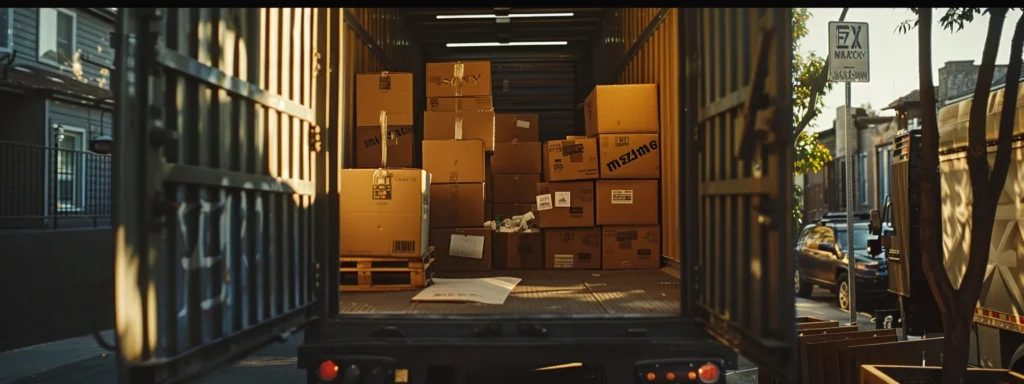Guide to Local Moving - Essential Tips
- Prepare Your Local Move: Checklist Essentials Unveiled
- Plan Your Move Early for a Smooth Transition
- Create a Personalized Moving Timeline
- Notify Essential Contacts of Your Address Change
- Schedule Time Off Work for Moving Day
- Sort and Declutter Your Belongings
- Sort and Declutter Your Belongings
- Decide What to Keep, Donate, or Discard
- Organize a Garage Sale or Donation Pickup
- Secure Important Documents and Valuables
- Gather Necessary Packing Supplies
- Make a List of Required Packing Materials
- Find Affordable or Reusable Packing Options
- Purchase Specialty Boxes for Fragile Items
- Pack Efficiently and Effectively
- Adopt Room-by-Room Packing Techniques
- Label Boxes Clearly for Easy Unloading
- Prepare an Essentials Box for Immediate Needs
- Hire a Reliable Local Moving Company
- Research and Compare Local Movers
- Read Reviews and Check Credentials
- Understand and Select Appropriate Insurance Coverage
- Prepare Your New Home Before Moving In
- Arrange for Utilities and Services to Be Connected
- Clean and Prepare the Space Ahead of Time
- Plan the Furniture Layout in Advance
Prepare Your Local Move: Checklist Essentials Unveiled
Moving to a new home can feel overwhelming, especially when you consider all the details involved. Did you know that nearly 45% of people find packing and organizing one of the most stressful parts of the moving process? In this blog post, I’ll share essential checklist items to prepare your local move, like sorting and decluttering your belongings and gathering necessary packing supplies. By following these steps, you can reduce stress and ensure a smoother transition to your new home. Whether you need a reliable local moving company or self storage solutions, this guide will help you tackle any emergency situations that may arise, making your move easier and more efficient.
Plan Your Move Early for a Smooth Transition
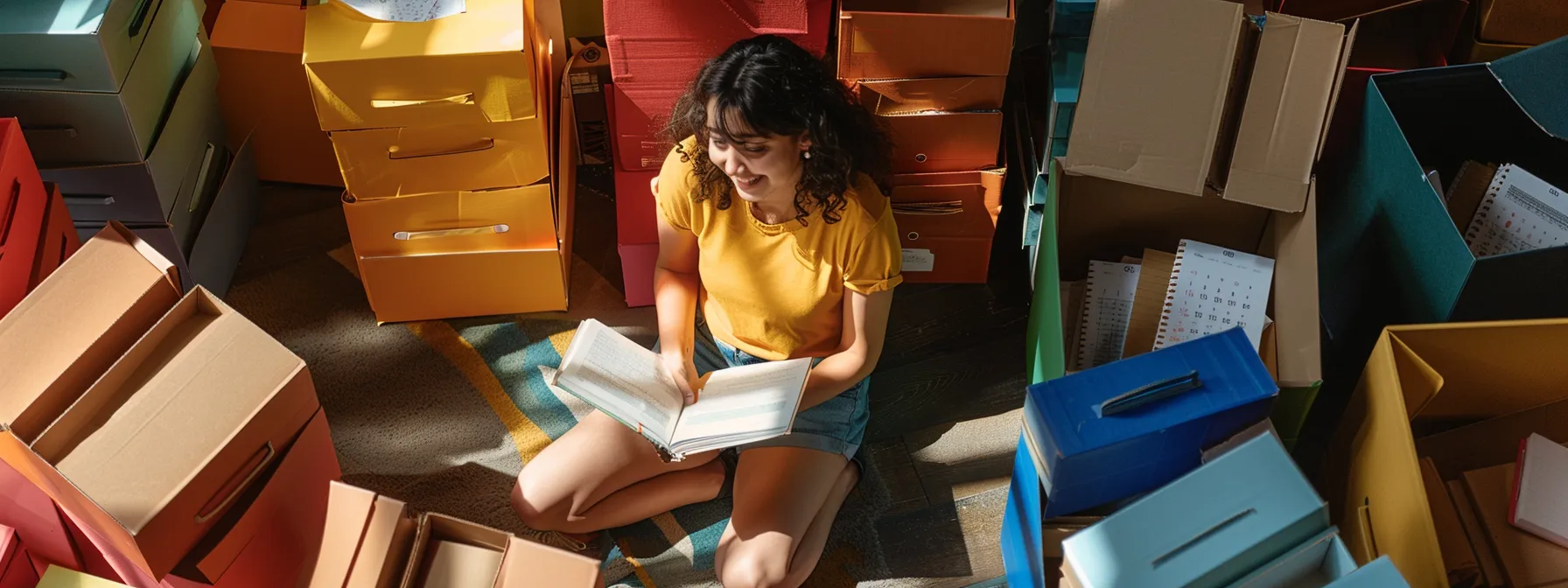
To ensure a seamless transition during your local move, start by creating a personalized moving timeline. Next, notify essential contacts of your address change, so they can update your records Moving Labor Services. Lastly, don’t forget to schedule time FMCSA Official Site off work for moving day, ensuring you have the support needed. By focusing on these key tasks, you can interact with customer service more effectively and even secure a free quote for your next bedroom setup Junk Removal Services.
Create a Personalized Moving Timeline
Creating a personalized moving timeline is essential to streamline your local move and minimize stress. I recommend starting as early as possible, ideally six weeks in advance, to outline tasks like packing, booking a storage unit for items you won’t need immediately, and designating time to label boxes with a permanent marker for easy identification. This can include labeling boxes by room, such as the bathroom, to ensure a smoother unpacking process once you arrive at your new home:
- Set a moving date and create milestones leading up to it.
- List packing tasks divided by room, like living room, kitchen, and bathroom.
- Allocate time for securing necessary supplies, such as boxes and markers.
- Plan for logistics, including hiring movers or enlisting friends for help.
- Schedule time for address changes with important contacts.
Notify Essential Contacts of Your Address Change
Notifying essential contacts of your address change is an important step to ensure everything falls into place on moving day. I recommend reaching out to your utility providers, banks, and any subscriptions you may have to provide them with your new address. Additionally, don’t forget to inform local moving companies or Local Moving Services that might need your updated information for the logistics on the day of your transition, especially if you’re utilizing a closet full of items that require careful transport:
| Contact Type | Action Required |
|---|---|
| Utility Providers | Update billing address and services |
| Bank/Credit Card Companies | Change address for statements and cards |
| Subscriptions | Notify of address to ensure delivery |
| Local Moving Companies | Update your information for moving services |
Schedule Time Off Work for Moving Day
Scheduling time off work for moving day is a crucial step in my planning checklist. This allows me to coordinate with my moving company and ensures that I can oversee the entire process without distractions. Additionally, taking this step gives me the flexibility to handle last-minute details, such as ensuring I have cash on hand for any tipping or additional expenses with the movers. By making this early decision, I create a smoother, more organized moving experience, which is essential for a successful move.
As you plan, take a moment to consider what you truly need. Sorting and decluttering will lighten your load and make the move ahead that much simpler.
Sort and Declutter Your Belongings
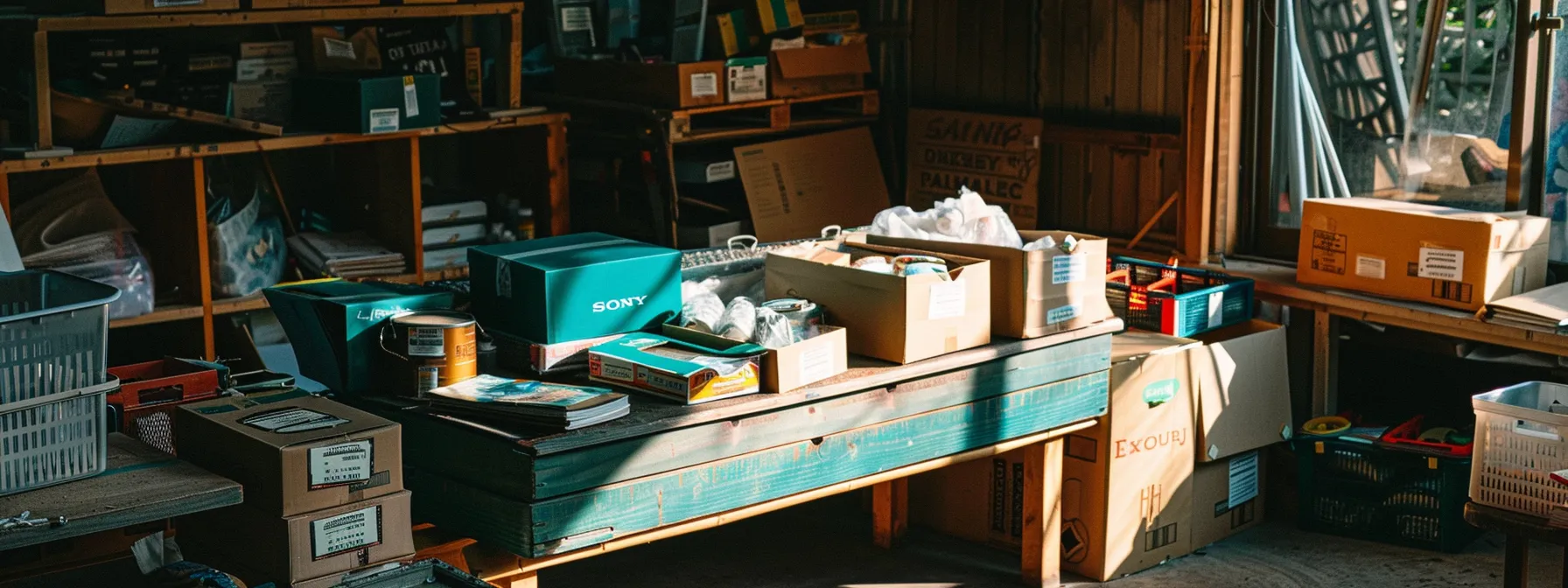
Sort and Declutter Your Belongings
Deciding what to keep, donate, or discard is vital for a successful local move. I recommend creating an inventory of your belongings to streamline this process. Additionally, organizing a garage sale or scheduling a donation pickup can effectively reduce clutter. Don’t forget to secure important documents and medication, ensuring they travel safely to your new home.
Decide What to Keep, Donate, or Discard
When sorting through your belongings for a local move, I find it essential to categorize items into three groups: keep, donate, and discard. This approach helps me streamline my packing process and make more efficient use of moving supplies like cardboard boxes. As I evaluate what to keep, I consider the practicalities of each item. For instance, I assess whether I genuinely use an item, its condition, and if it holds significant value—both sentimental and practical, such as first aid supplies that I want to ensure I have on hand during the move. This not only declutters my space but also makes coordination with moving companies smoother, as I have a clear understanding of what needs to be moved:
| Item Category | Action |
|---|---|
| Keep | Pack in labeled cardboard boxes |
| Donate | Schedule pickup or drop off at local charities |
| Discard | Dispose of properly or recycle as needed |
Organize a Garage Sale or Donation Pickup
Organizing a garage sale or scheduling a donation pickup is a practical step to manage what you no longer need while preparing for your local move. I find that these options not only help me declutter but also allow me to transport items to new homes in a meaningful way. When planning logistics for the sale, ensure you have adequate supplies like bubble wrap to protect fragile items, and if you’re considering donating, remember to request a quote from local charities to simplify the pickup process. This effort reduces your moving load and can give a second life to your belongings while potentially supporting a good cause.
Secure Important Documents and Valuables
As I prepare for my local move, one critical step is to secure important documents and valuables. I find it essential to keep all crucial papers, like passports, birth certificates, and financial records in a designated, easily accessible folder during the moving process. Utilizing local moving services means I can communicate my need for discretion and care regarding these items, so they’re well-handled throughout the move. Whether I’m considering Fixed Rate Moving options or hiring Commercial Moving Services, prioritizing document safety helps alleviate stress and ensures peace of mind, knowing that everything valuable is safe during transit.
With the clutter sorted, it’s time to think about how to get everything packed. Gathering the right supplies now will make the process smoother and ensure nothing gets left behind.
Gather Necessary Packing Supplies
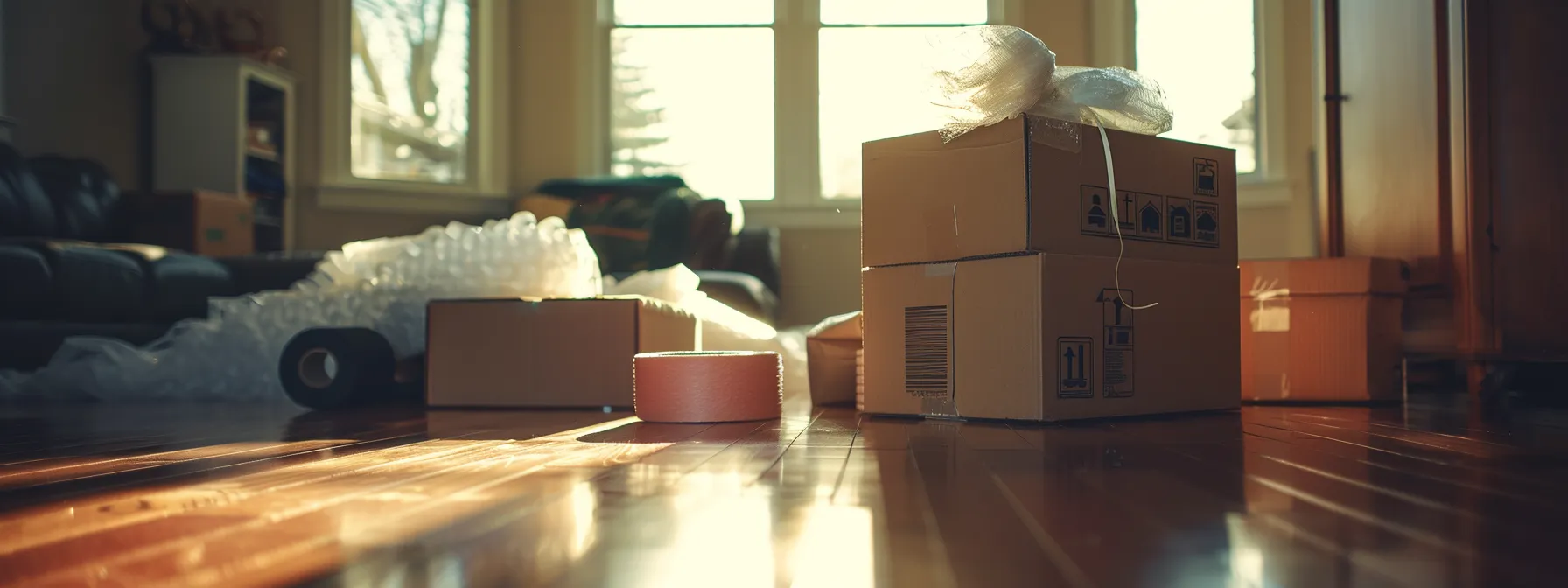
To ensure my local move goes smoothly, I start by gathering all the necessary packing supplies. I make a list of required materials, find affordable or reusable packing options, and purchase specialty boxes for fragile items. This approach not only protects my belongings but also helps me navigate logistics, especially when considering Moving Insurance or if an elevator is involved.
Having the right supplies ready streamlines the packing process and alleviates last-minute stress. I’ll cover how to identify materials that suit my needs, strategies for cost-effective packing, and the importance of using proper boxes for valuable items.
Make a List of Required Packing Materials
Making a list of required packing materials is crucial for a streamlined local move. I always ensure to include essential items like sturdy boxes, packing tape, bubble wrap, and protective materials for fragile electronics. Don’t forget to think about the basics too, such as toilet paper for the day of the move, as well as bags for items that you might sell at a garage sale before your transition. Having a well-prepared list saves time and reduces the stress associated with last-minute packing needs, especially if you’re also coordinating with a real estate agent or discussing logistics with your landlord for your new place:
| Packing Material | Purpose |
|---|---|
| Sturdy Boxes | To safely pack and transport belongings |
| Packing Tape | Secures boxes and prevents them from opening |
| Bubble Wrap | Protects fragile items, including electronics |
| Basic Supplies | Includes essential items like toilet paper |
Find Affordable or Reusable Packing Options
Finding affordable or reusable packing options can significantly reduce my moving costs while still ensuring my belongings are protected. I often explore local sources for boxes, like grocery stores or bookstores, which frequently offer free cardboard boxes that are sturdy enough for packing items from my pantry. I also use towels and linens as protective padding for fragile items, eliminating the need for costly bubble wrap while ensuring everything remains secure during transport with the help of my NYC movers.
Purchase Specialty Boxes for Fragile Items
When I prepare to move locally, purchasing specialty boxes for fragile items is essential for protecting my belongings during transit. These boxes are specifically designed to ensure that items like dishes, glassware, and artwork remain safe while being transported, minimizing the risk of damage. I make sure to communicate with my moving company about their requirements, including requests for a certificate of insurance if I’m renting or using van lines, as this can provide added peace of mind while keeping my valuable possessions intact.
- Assess the types of fragile items to pack.
- Purchase specialty boxes tailored for the specific items.
- Arrange for additional protective materials if necessary.
- Communicate your needs to the moving company.
- Consider securing a certificate of insurance for extra protection.
With the supplies gathered, it’s time to focus on the packing itself. A smart approach will make your move smoother and save you time in the end.
Pack Efficiently and Effectively

Packing efficiently is key to a successful local move. I recommend adopting room-by-room packing techniques, which help me maintain organization and clarity in my belongings. Clearly labeling boxes ensures that I can quickly unload items without confusion, even when navigating stairs. I also prepare an essentials box for immediate needs, using stretch wrap to keep important items secure, such as licenses and personal documents, ensuring everything is easily accessible in my suitcase when I arrive at my new home.
Adopt Room-by-Room Packing Techniques
Adopting room-by-room packing techniques has proven to be an invaluable strategy for my local move. By focusing on one room at a time, I streamline the packing process and ensure that I don’t overlook important items, such as blankets or cargo that needs special handling. This method also allows me to keep track of what I’ve packed, making it easier to update my inventory, which is crucial for my bill of lading and mail forwarding details:
| Room | Items to Pack | Special Considerations |
|---|---|---|
| Living Room | Furniture, electronics, decor | Wrap electronics with blankets for protection |
| Bedroom | Bedding, clothes, personal items | Keep a credit card handy for last-minute purchases |
| Kitchen | Dishes, cookware, small appliances | Label boxes clearly to avoid confusion |
Label Boxes Clearly for Easy Unloading
When labeling boxes for my local move in New York City or Brooklyn, I find that clarity is crucial. Each box should clearly indicate its contents and the room it’s destined for, which simplifies the unloading process and minimizes confusion during the unpacking phase. For example, I use large, bold markers on plastic containers to ensure legibility and avoid any mix-ups, especially when managing important details like tax documents or items from moving guides that I need immediately upon arrival in my new home.
Prepare an Essentials Box for Immediate Needs
When I prepare for a local move, creating an essentials box is a critical step to ensure I have immediate access to necessary items. This box should include essentials such as toiletries, a few changes of clothes, important documents, and a pillow for a comfortable night’s rest. By following the ultimate moving checklist, I can easily keep track of these necessary items and reduce the chaos that often accompanies moving day, allowing me to handle the transition smoothly.
| Essential Item | Purpose |
|---|---|
| Toiletries | For personal hygiene needs immediately upon arrival |
| Change of Clothes | To stay comfortable during the moving process |
| Pillow | To ensure a good night’s sleep after a long day |
| Important Documents | For quick access to necessary paperwork and contracts |
Packing well lays the groundwork for a smooth move. Now, it’s time to consider the next step: hiring a reliable local moving company that can make your transition effortless.
Hire a Reliable Local Moving Company
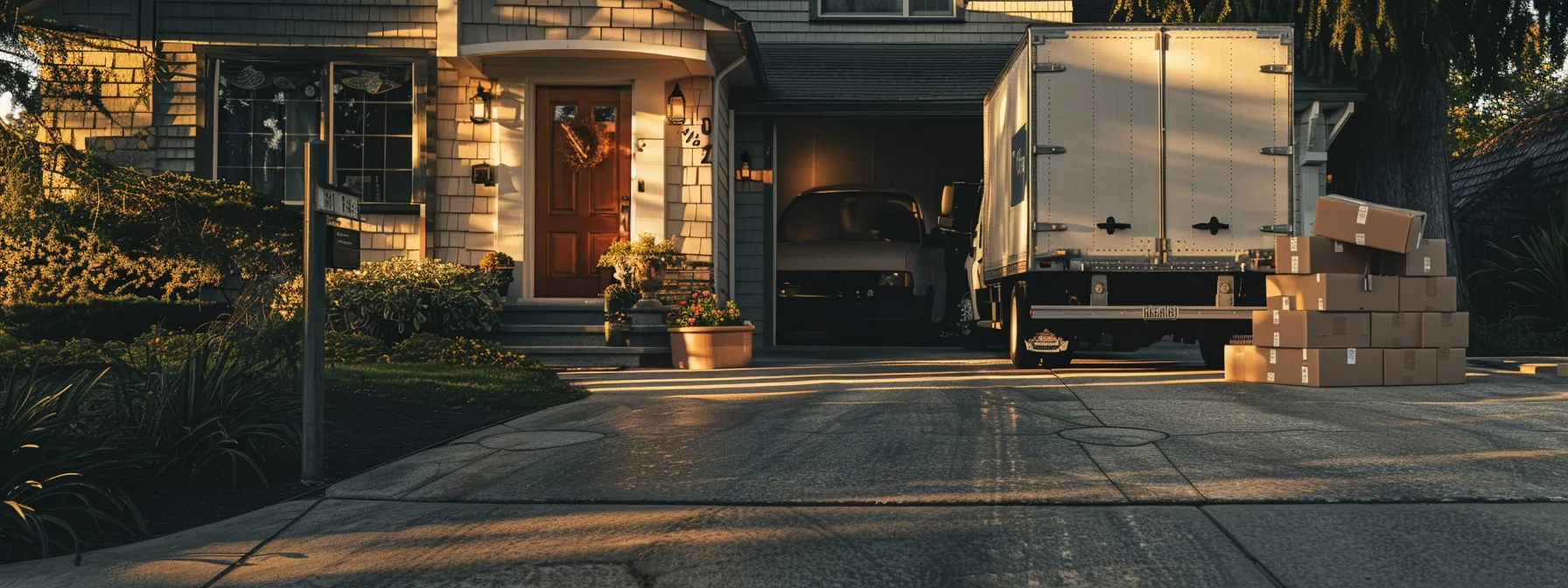
To ensure a successful local move, hiring a reliable local moving company is essential. I prioritize researching and comparing various local movers to find the best fit. Reading reviews and checking credentials helps me gauge each company’s reputation. Additionally, understanding and selecting appropriate insurance coverage ensures that my belongings are protected during the move. These steps are crucial in making an informed decision that will contribute to a smoother relocation process.
Research and Compare Local Movers
When I set out to hire a local moving company, I prioritize researching and comparing various options to find the most reliable movers. I check online reviews and ratings on platforms like Yelp or Google to gauge customer satisfaction. Additionally, I ensure the company is licensed and insured, providing me with confidence that my belongings will be protected during the move. By collecting quotes from several companies, I can make an informed decision that aligns with my budget and needs, ultimately leading to a smoother moving experience:
| Criteria | What to Look For |
|---|---|
| Licensing | Ensure the mover has proper state licensing and insurance. |
| Reviews | Read customer reviews on trusted platforms for feedback. |
| Quotes | Collect and compare quotes from multiple movers. |
| Services Offered | Check for additional services like packing or storage options. |
Read Reviews and Check Credentials
When hiring a reliable local moving company, reading reviews and checking credentials is essential. I take the time to explore customer feedback on platforms like Yelp and Google, looking for consistent themes regarding professionalism and reliability. Additionally, confirming that the moving company holds the necessary licensing and insurance gives me peace of mind, ensuring my belongings are in safe hands during the move.
Understand and Select Appropriate Insurance Coverage
Understanding and selecting appropriate insurance coverage for your local move is critical to safeguarding your belongings. I always take the time to discuss the available insurance options with my moving company, as they often offer basic liability coverage and additional protection plans for valuable items. By clarifying what is covered and any deductibles involved, I ensure my possessions are adequately protected during transit, minimizing my financial risk in the event of unexpected damage:
- Inquire about basic liability coverage offered by the moving company.
- Consider additional coverage for high-value items like electronics or antiques.
- Understand the terms and conditions of each insurance option.
- Verify if your homeowner’s insurance includes any moving coverage.
- Discuss deductibles and claims processes for clarity.
Now that you’ve chosen a reliable moving company, it’s time to shift your focus. Preparing your new home will set the stage for your fresh start, making the transition smoother and more welcoming.
Prepare Your New Home Before Moving In

Before moving into my new home, I prioritize a few essential steps to ensure a seamless transition. First, I arrange for utilities and services to be connected so I can settle in comfortably. I also make it a point to clean and prepare the space ahead of time. Finally, planning the furniture layout in advance allows me to visualize the setup, making the moving process smoother and more organized.
Arrange for Utilities and Services to Be Connected
When I prepare for my local move, arranging for utilities and services to be connected is a top priority. I always start by contacting providers for electricity, water, gas, and internet a few weeks in advance to ensure everything is ready on moving day. This proactive approach not only helps avoid inconveniences like arriving to a dark home but also allows me to settle in comfortably without skipping a beat as I transition into my new living space.
Clean and Prepare the Space Ahead of Time
Before I move into my new home, I always make it a priority to clean and prepare the space ahead of time. This means tackling tasks such as dusting surfaces, scrubbing floors, and ensuring the bathrooms and kitchen are spotless. Having a clean environment not only makes my living space welcoming but also allows me to start fresh without lingering dust or allergens, contributing to a smoother transition during my local move.
Plan the Furniture Layout in Advance
Planning the furniture layout in advance is a crucial step that I always prioritize before moving into my new home. By sketching a basic floor plan, I can visualize where larger items like sofas and beds will fit, ensuring a more efficient moving day. This preparation not only saves time during the move, but it also allows me to create a functional and inviting space right from the start, addressing my immediate comfort needs as I transition into my new living environment.

